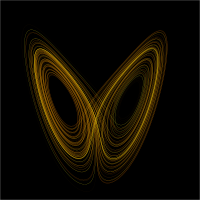
Photo from wikipedia
This study examines the stability and transitions of the quasi-periodic plasma perturbation model from the perspective of the dynamical transition. By analyzing the principle of exchange of stability, it is… Click to show full abstract
This study examines the stability and transitions of the quasi-periodic plasma perturbation model from the perspective of the dynamical transition. By analyzing the principle of exchange of stability, it is shown that this model undergoes three different types of dynamical transitions as the model control parameter increases. For the first transition, the model exhibits a continuous transition type and subsequently bifurcates to two stable steady states. As this model parameter further increases, the second and third transition can be either continuous or catastrophic. For the continuous transition, the model bifurcates from the two steady states that are resulted from the first transition to a stable periodic solution. If the second transition is catastrophic, there exists a singular separation of a periodic solution, and a nontrivial attractor emerging suddenly for a subcritical value of the control parameters. Numerical experiments confirm both continuous and catastrophic types of transitions, which depend also on the other model parameters. The continuous transition region and catastrophic transition region are also numerically demonstrated. The method used in this paper can be generalized to study other ODE systems.
Journal Title: Nonlinear Dynamics
Year Published: 2019
Link to full text (if available)
Share on Social Media: Sign Up to like & get
recommendations!